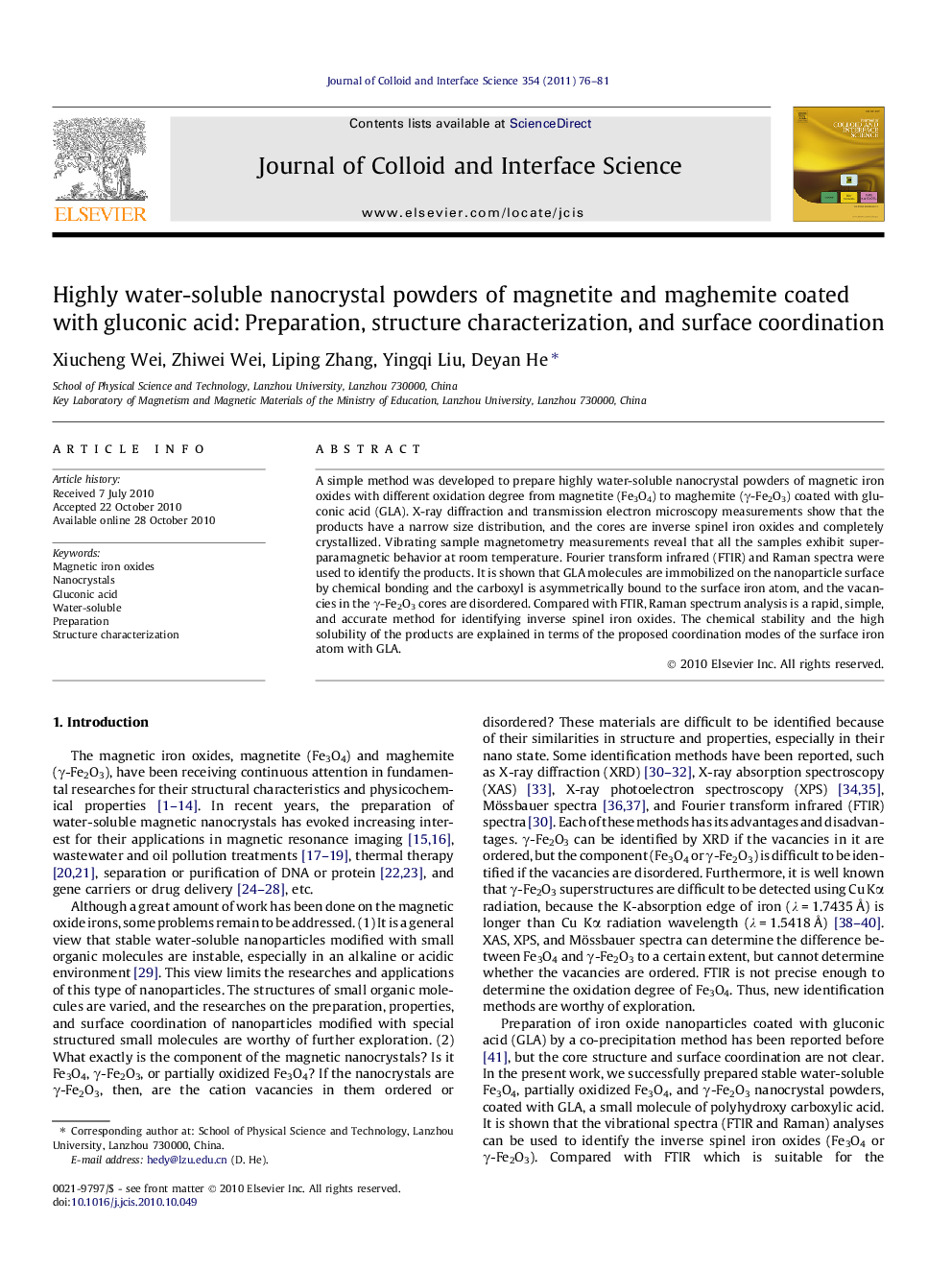| Article ID | Journal | Published Year | Pages | File Type |
|---|---|---|---|---|
| 608849 | Journal of Colloid and Interface Science | 2011 | 6 Pages |
A simple method was developed to prepare highly water-soluble nanocrystal powders of magnetic iron oxides with different oxidation degree from magnetite (Fe3O4) to maghemite (γ-Fe2O3) coated with gluconic acid (GLA). X-ray diffraction and transmission electron microscopy measurements show that the products have a narrow size distribution, and the cores are inverse spinel iron oxides and completely crystallized. Vibrating sample magnetometry measurements reveal that all the samples exhibit superparamagnetic behavior at room temperature. Fourier transform infrared (FTIR) and Raman spectra were used to identify the products. It is shown that GLA molecules are immobilized on the nanoparticle surface by chemical bonding and the carboxyl is asymmetrically bound to the surface iron atom, and the vacancies in the γ-Fe2O3 cores are disordered. Compared with FTIR, Raman spectrum analysis is a rapid, simple, and accurate method for identifying inverse spinel iron oxides. The chemical stability and the high solubility of the products are explained in terms of the proposed coordination modes of the surface iron atom with GLA.
Graphical abstractHighly water-soluble nanocrystal powders of magnetite (Fe3O4, S1), partially oxidized magnetite (S2–S6) and maghemite (γ-Fe2O3, S7–S8), coated with gluconic acid (GLA).Figure optionsDownload full-size imageDownload high-quality image (122 K)Download as PowerPoint slideResearch highlights► Highly water-soluble nanocrystal powders of magnetite and maghemite coated with gluconic acid (GLA) have been prepared and characterized. ► Raman spectra analysis is a rapid and simple method for qualitatively identifying the oxidation degree of spinel iron oxides. ► The proposed coordination modes of the surface iron atom with GLA well explain the chemical stability and the high solubility of the products.
